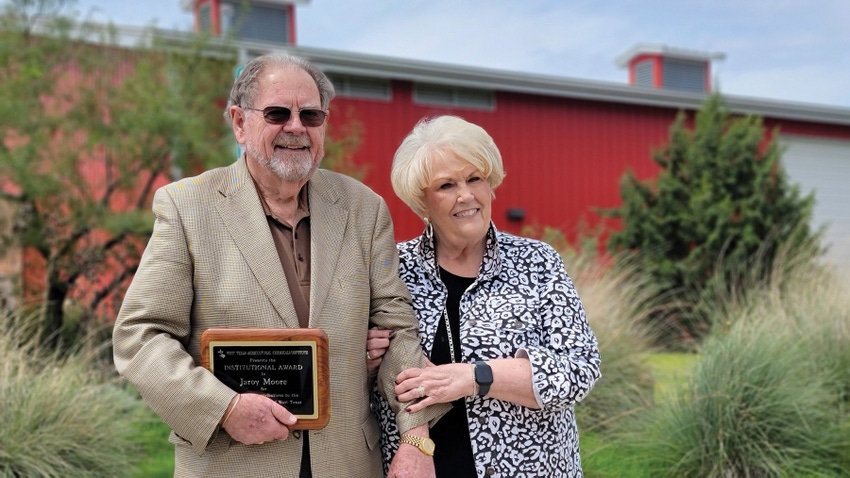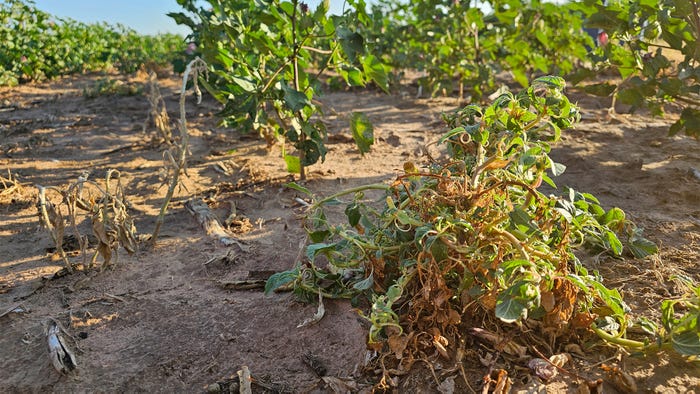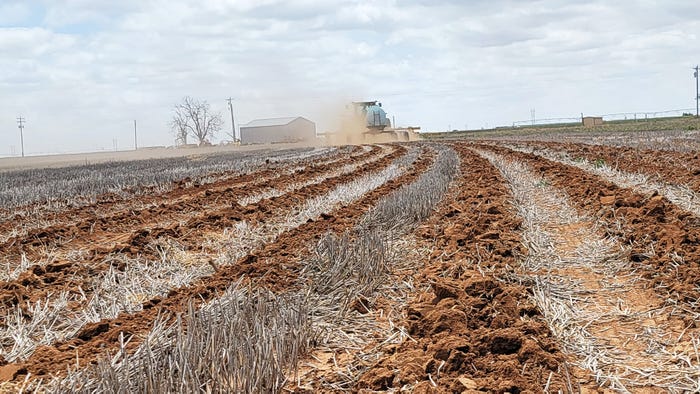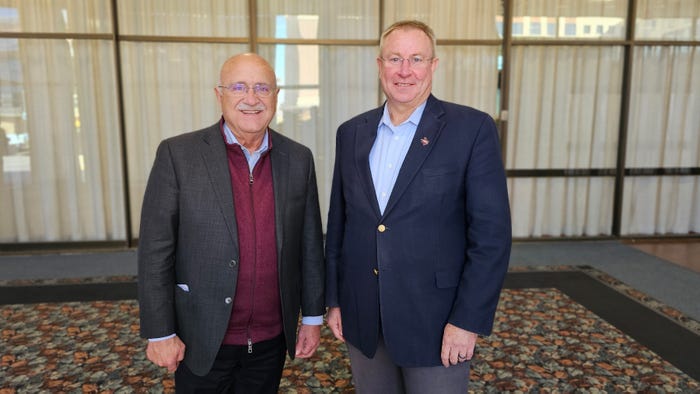
Jaroy Moore says he has no big plans or pet projects to take on when he retires in early May.
“My daughter and son-in-law have 10 acres on the edge of Lubbock,” he says. “My son-in-law runs a few cattle and has a shop where I tinker around a bit. Maybe I’ll just tinker a little more.”
In April, Moore steps down from his position as director of the Texas A&M AgriLife Research and Extension Center at Lubbock, a post he’s held since 1998. In all, he has put in some 55 years with Texas A&M, counting jobs he held while working on his degrees.
“I worked the whole time I was in college,” Moore said during a video call with Farm Press. “Sometimes, I took a semester off to work full time. I went to Pecos Station in 1970 as I was finishing my Ph.D.”
Moore grew up on a farm and considered going back after high school. “I grew up in the drought years of the ‘50s in McCullough County, graduated high school in 1959. Things had begun to get a little better on the farm, but not real good. My dad told me I should go to college. I said things were looking a little better. He said, ‘you can always come back,’”
He went to Tarleton for two years and then to Texas A&M where he was encouraged to go on to graduate school. “I guess the drought made such an impression on me I never was in a hurry to go back to the farm,” he says.
“I started out as scientist at Pecos and then station superintendent, and then went to El Paso as resident director. That was in ‘95; I came to Lubbock in ‘98.”
Ag revolution
He’s witnessed something of an agricultural revolution in his more than a half century of service.
“One of the biggest changes here was Bill Lyle's work on center pivots, going from high pressure, high evaporative loss to the LEPA (Low Elevation Precision Application) system. That’s probably the biggest change that benefited irrigated agriculture in this region,” Moore says.
He explains that not all irrigated farms adopted the total drop system, but many did switch to a low pressure spray nozzle. They continued to use the drop nozzles lowered nearer the crop.
“Another milestone has been subsurface drip irrigation,” Moore says. “That technology has made irrigation more efficient and has allowed farmers to make much higher yields.”
Seed technology
Moore says seed technology also changed agriculture. Adding traits to seed improved efficiency, he says, especially with weed control and Roundup Ready varieties. “People forgot what a cultivator was or how to set one up. Another change, and not a positive one, was weeds developing resistance to Roundup.”

Herbicide resistance. (Photo by Shelley E. Huguley)
Our conventional breeding programs in cotton, corn, sorghum, peanuts, and potatoes have continued to make advances that benefit producers.
Newer cotton varieties offer other advantages, Moore says. “Dr. Katie Lewis has studied nitrogen use with some of these varieties and found that we can change recommendations. The amount of nitrogen needed to grow a bale of cotton is less with these improved varieties.”
He says GPS technology improved production efficiency. “GPS allowed farmers to get over acreage much faster.”
He adds that they also can farm more acreage. “In order for producers to survive, they must expand; there's no small farms anymore.”
Dryland research
Moore says agriculture research continues to face challenges and to find ways to meet them.
“The biggest challenge now is a continual transition to dryland agriculture. Funding for dryland agriculture research is hard to find.”
It’s also hard for graduate students to take on the long-term prospects of dryland research, he adds. ”It could take five years to collect enough dryland data to do a thesis or dissertation. Our scientists, especially newer hires, also need to publish research results and face the same situation.”
He says the variability of rainfall or drought causes crop failures and often prevents data collection. “That’s probably the biggest challenge we have with conducting dryland research.”
A time of change
Moore says cropping systems will change across the region.
“That’s happening more now. For a long time here, it was cotton, cotton, and cotton. Now, because of the price of commodities, a lot of times it's still cotton, cotton, and cotton.
“More farmers are looking at no-till and limited tillage. Many are growing rye or wheat cover crops to protect seedling cotton from wind-blown sand. In some cases, cover can protect cotton from windstorms or a hailstorm, if it’s not a bad one. A cover on the corners also helps prevent sand blowing. That’s worth a lot.”

"More farmers are looking at no-till and limited tillage," said retiring Texas A&M AgriLife Research and Extension Director Jaroy Moore, Lubbock. (Photo by Shelley E. Huguley)
He says cotton has been the dominant crop across the region for many years. “I don’t see that changing.”
He says grain sorghum takes some acreage, but cotton pays the bills. “Farmers have always told me they don't get the return from grain sorghum they get from cotton. Cotton seems to be a little more dependable. We do see benefits to rotation, and when we get hailed late, grain sorghum acreage goes up.”
Moore’s career has included two recissions from the Texas legislature. “Those were not fun. One was early on, and I wasn't prepared for it. I had to tell good people, ‘I'm sorry, but we have to make cuts and your position was eliminated. By the next one, I was a little better prepared. It was still rough and hard to operate.”
Credit to A&M staff
Moore credits the center’s success to many folks who provided hard work and leadership over the years. “We have been fortunate to have a great group of people from scientists to office staff to AgriLife leadership. Many of the people at the center have been here for most of their careers,” Moore says.
“I've served under, six or seven directors, including Neville Clark and Mark Hussey.” He says current leadership is “a top-notch group including Vice Chancellor Jeff Savell and Director Cliff Lamb, and Associate Directors Stephen Cisnero and Amir Ibrahim. They understand what goes on in the country.

Texas A&M University Vice Chancellor Jeff Savell and Director Cliff Lamb(Shelley E. Huguley)
“We've also been fortunate to have commodity groups representing corn, cotton, peanuts, and grain sorghum here in Lubbock. We work with water districts. We have a great group of producers who cooperate with on farm studies.”
Team approach
Moore says discipline research has always been a part of the mission at the Lubbock Center but a team approach is necessary.
“Many problems producers face can’t be solved with one discipline. It takes weed scientists, pathologists, entomologists, soil fertility scientists, and irrigation researchers working together to solve today’s problems. Our scientists have to be team players.”
He adds that joint appointments with Texas Tech offers challenges but benefits, too. “Sometimes a joint appointment is challenging but it brings us closer together.” We are also fortunate to have the USDA-ARS lab here in Lubbock. TTU, ARS, and AgriLife work closely together, which benefits our producers.
He said the ongoing relationship with the AG-Cares site at Lamesa offers unique opportunities as well. “The AG-Cares location includes sandy land, a much different challenge compared to Lubbock or Halfway locations. Irrigation studies, comparing subsurface drip in the sandy land versus the tighter soils at Halfway are important,” Moore says.
“Also, Ag-Cares offers Dr. Terry Wheeler a site to study nematodes. Ag-Cares allows us to serve the southern part of the area much better.”
He adds that major agriculture industries have headquarters in Lubbock and provide support for research, a boon in a time when research funding is often hard to find.
“There was a time when most research support came from the State Legislature and from Washington,” Moore says. “That has changed and grant funding is increasingly important.”
Close ties with commodities and industry help fund research, he says. “We all work together.”
Next up
Moore says it's time for someone younger with new ideas to take over and says Todd Baughman, who’s been at Oklahoma State University for the last 15 years, will fill that role nicely.
“Todd is an excellent choice. He worked with our scientists when he was at Vernon and understands our issues and the problems.”
Strong position
Moore says Baughman will find the center in good shape when he comes in.
“AgriLife research is probably as strong as it’s been since the Neville Clark days (back in the ‘70s),” Moore says. “A recent state legislative session provided funding for infrastructure improvements and salary increases. I'm grateful to Texas A&M leadership and state legislators.”
Jaroy Moore leaves AgriLife Research after more than a half-century of meaningful work, more than can be detailed in one article. His leadership has touched and benefitted farmers across the state, and findings in irrigation technology, tillage, and other crop production projects stand as a legacy to his commitment to Texas farmers.
Read more about:
ExtensionAbout the Author(s)
You May Also Like






